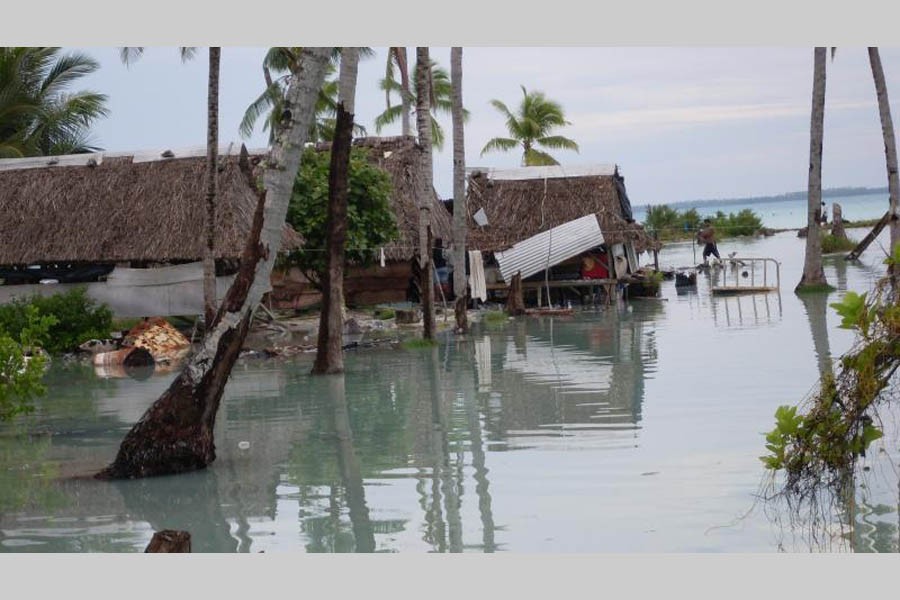Already vulnerable to frequent disasters on account of geographical location, Bangladesh is now exposed to adverse impacts of climate change. The threat comes from hydrological influence of unpredictable rainfall during monsoon and changes in regional water-flow patterns. Most parts of the country experience too much water during the monsoon and many parts of it do not have sufficient water in dry season. Lack of rains often causes severe droughts and conversely floods rampage one after another area in rural Bangladesh during the monsoon. Thus natural calamities are the only outcome.
The impact of climate change has been impacting lives and livelihoods of thousands of people and the disadvantaged people are the worst sufferers. For an example, Bangladesh has experienced a series of floods over the last few years. Flash floods have affected people living in the haor and low-lying areas of north-eastern region and monsoon floods have affected around half of the total districts, specially the northern districts of the country. The floods have caused huge damage to the affected areas. Loss of lives and livelihood has been compounded further by damage and destruction of crops and housing infrastructure. Such floods have caused serious miseries to people in the affected areas, particularly to the lowest income groups and socially vulnerable. In most of the cases, it was seen that the disaster-affected community could not overcome the losses and get back to their usual life after the natural disaster.
The impact of disaster cannot be reduced in the absence of a resilient approach. If people of a community have proper orientation and capacity for resilient techniques, then it becomes easier for them to cope with the climate change vulnerability and they can get back to their normal life after such disasters. Enhancing community resilience is also very important for ensuring sustainable livelihood of people for the future. As the impacts of disasters are increasing because of climate change and other natural and human activities, development practitioners are prescribe enhancement of resilience capacity as a solution to the threats to the community people that hamper their usual life and destroy their livelihood and social capital. In resilience approach, adaptive capacity is considered the key achievement for the community people. Communities are advised to achieve several capacities that will help them achieve resilience capacity and respond to disasters. These capacities are developed through sound networks and connection, using indigenous knowledge, social engagement and resource management.
For achieving these capacities by the communities, some of the initiatives should be implemented at the community level by the government, NGOs and service providing organisations. People's knowledge, attitude and practice on climate change, resilience and disaster risk reduction should be increased through arranging different types of community mobilisation events and trainings and providing Information, Education and Communication (IEC) materials. In this regard, participatory approach should be applied for ensuring greater impacts among the community people. People should be introduced to the vulnerability and context analysis of their own community. Thus, they will be aware of the effects of disaster on their life and livelihood. As a result, they will be able to take necessary preparedness options.
While undertaking these initiatives, special consideration should be given to people with disability, women, younger and adult group to ensure their active participation in resilience issue. Beside these, the resilience approach should be introduced to the educational institutions. Initiating larger scale mitigation, creating more working opportunities with sustainable environmental consideration and resilient agriculture should be initiated. If these initiatives are taken into consideration while orienting the community about resilience, then it would be helpful to achieve community resilience. If the people of Bangladesh are aware of the resilience approach and they have capacity for this, then they will be able to reduce impacts of disasters by their quick response.
The writer is a development practitioner and researcher


